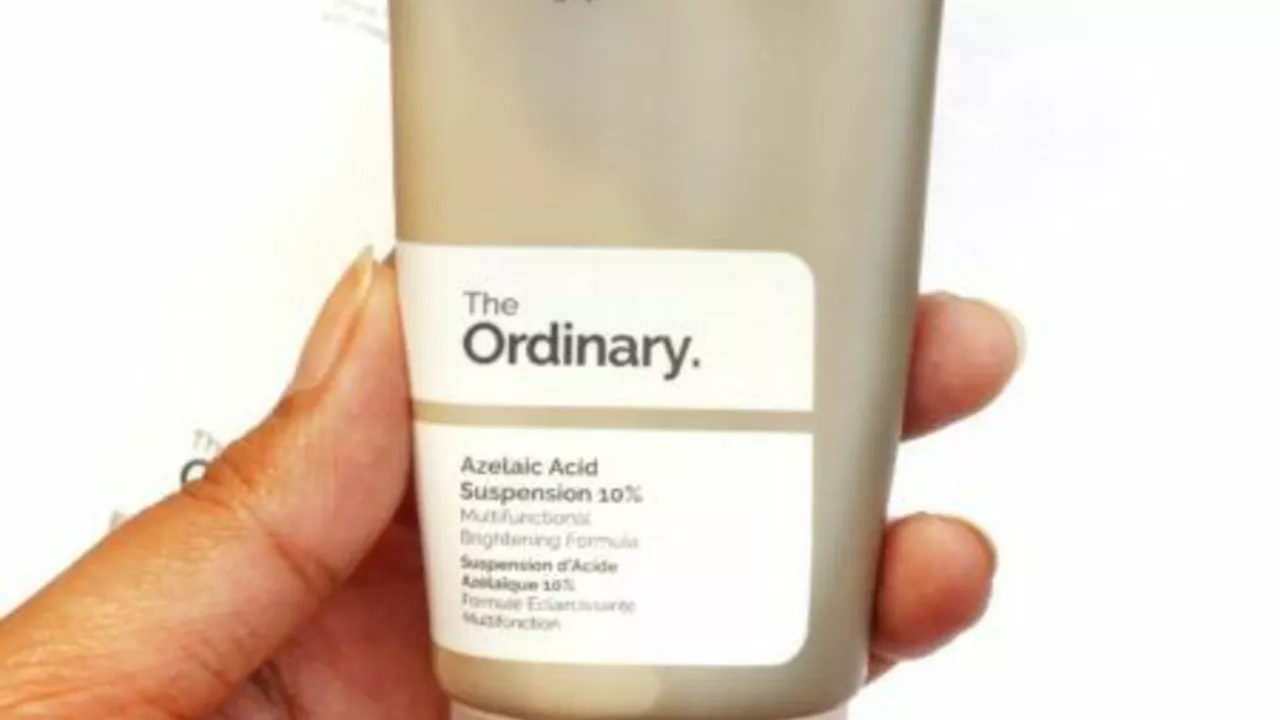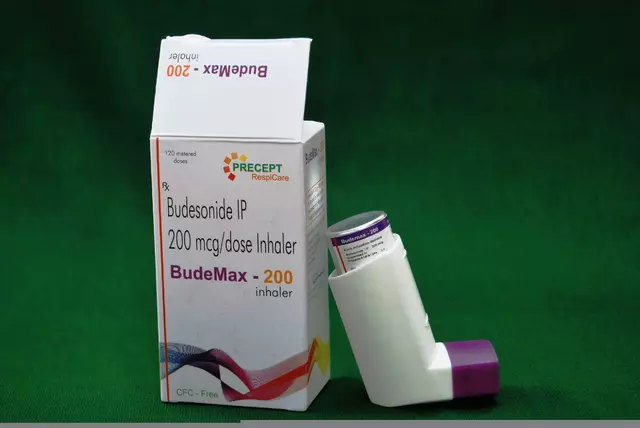Understanding Azelaic Acid
Azelaic acid is a naturally occurring substance that can be found in grains such as barley, wheat, and rye. It's also produced by the yeast that lives on our skin. This acid has anti-inflammatory and anti-bacterial properties which make it beneficial for people with sensitive acne-prone skin. The most fascinating part is that it's gentle on the skin, unlike other acids used in skincare products.
How Azelaic Acid Works on Sensitive Acne-Prone Skin
Azelaic acid works wonders on sensitive acne-prone skin by reducing inflammation, killing acne-causing bacteria, and helping to unclog pores. It has the ability to penetrate the skin's surface and kill the bacteria that cause acne and inflammation. Furthermore, it helps to reduce the production of keratin, a protein that can block pores and lead to acne.
The Anti-Inflammatory Benefits of Azelaic Acid
One of the key benefits of azelaic acid is its anti-inflammatory properties. It helps to soothe the skin, reduce redness, and calm any inflammation associated with acne. This is especially beneficial for sensitive skin types that may react harshly to other acne treatments. Moreover, it helps to reduce the appearance of post-acne marks and hyperpigmentation, leaving your skin clear and even-toned.
Antibacterial Effects of Azelaic Acid
Besides being anti-inflammatory, azelaic acid also has powerful antibacterial effects. It is effective against the bacteria that cause acne, Propionibacterium acnes. By killing these bacteria, azelaic acid helps to prevent the formation of new acne lesions, ensuring your skin remains clear and healthy.
Reducing Hyperpigmentation with Azelaic Acid
Azelaic acid is also known for its ability to lighten the skin and reduce hyperpigmentation. It inhibits the production of melanin, the pigment responsible for skin color. This makes it effective at reducing the appearance of dark spots and discoloration caused by acne or sun damage, resulting in a more even skin tone.
How to Incorporate Azelaic Acid into Your Skincare Routine
Adding azelaic acid to your skincare routine is quite simple. It's available in a range of products such as cleansers, serums, and creams. You can start by using a product with a lower concentration of azelaic acid and gradually increase as your skin gets used to it. Always remember to apply sunscreen when using azelaic acid as it can make your skin more sensitive to the sun.
Side Effects of Azelaic Acid
While azelaic acid is generally safe for most people, it can cause some side effects. These can include skin irritation, dryness, and peeling, especially when you first start using it. However, these effects are usually mild and tend to subside as your skin adjusts to the product. If you experience severe irritation or allergic reactions, it's best to stop using the product and consult a dermatologist.
Choosing the Right Azelaic Acid Product
When choosing an azelaic acid product, it's important to consider your skin type and concerns. For sensitive skin, look for products that are free from harsh ingredients like alcohol and fragrances. Also, consider the concentration of azelaic acid in the product. Start with a lower concentration and gradually increase as your skin gets used to it.
The Bottom Line: Azelaic Acid and Sensitive Acne-Prone Skin
In conclusion, azelaic acid is a powerful ingredient for those with sensitive acne-prone skin. Its anti-inflammatory and antibacterial properties make it effective at fighting acne, while its ability to reduce hyperpigmentation ensures a clear and even skin tone. However, like with any new skincare product, it's important to introduce it slowly into your routine and monitor your skin's reaction. Always consult with a dermatologist if you have any concerns.





Jeremy Olson
Thank you for the thorough overview of azelaic acid. It is reassuring to see the emphasis on both anti‑inflammatory and antibacterial properties. For those of us with sensitive skin, the gentle nature of the ingredient is especially important. Introducing it gradually, as you suggested, aligns well with best practices for new actives.
Ada Lusardi
Omg, I just tried a 10% azelaic serum and OMG my skin feels like a fresh canvas 😍✨! The redness is *gone* and I’m already seeing fewer breakouts. Seriously, this is a game‑changer for anyone who’s been scared of harsh acids. Keep the recommendations coming 🙏💖
Pam Mickelson
I appreciate the clear structure of the article. The points about keratin reduction and melanin inhibition are spot‑on. It’s also valuable to note that a lower concentration can help the skin adapt without irritation. Overall, a well‑written guide for beginners and seasoned users alike.
Joe V
Ah yes, another miracle acid to add to the ever‑growing list of “must‑have” skincare items. Because clearly, we’ve never heard of anything like this before. Still, if you enjoy spending extra on niche ingredients, go ahead. Just don’t expect it to replace a proper routine.
Scott Davis
Sounds good.
Calvin Smith
Oh, absolutely, because nothing says “effective” like a chemical that sounds like a city in Spain. Let’s all drop our existing serums, grab a bottle of azelaic, and pretend we’re skincare gurus. If it works, great; if not, at least we tried something “fancy”.
Brenda Hampton
Keep pushing forward! The journey to clearer skin is a marathon, not a sprint, and every small step-like adding azelaic acid-counts toward the finish line. Your consistency will pay off.
Lara A.
Do you really think the pharmaceutical industry is just handing out free miracles? There’s always a hidden agenda, a secret profit motive, and a massive data collection scheme behind every “new” ingredient. We must stay vigilant and question everything, especially when the hype is so loud.
Ashishkumar Jain
While skepticism can be healthy, it’s also worth noting that azelaic acid has been studied for decades and is widely used in dermatology. Balance your caution with the evidence that supports its safety and efficacy. Ultimately, informed choices beat fear‑driven avoidance.
Gayatri Potdar
Look, every time you trust a “study” you’re just feeding the system that’s out to control us. They’ll tell you it’s safe, but it’s all a cover‑up to keep us dependent on their products. Wake up, people! Don’t let them sell you chemicals with fancy names while they monitor your every move.
Marcella Kennedy
I’ve been dealing with sensitive, acne‑prone skin for most of my teenage years, and I can attest that finding the right active ingredient is like searching for a needle in a haystack. When I first heard about azelaic acid, I was skeptical because every new product seemed to promise miracles and then delivered disappointment. However, after reading numerous studies and hearing from dermatologists, I decided to give it a cautious try. I started with a 10% serum, applying it every other night after my gentle cleanser, and I made sure to follow up with a robust moisturizer to prevent any potential dryness. Within the first week, I noticed a subtle reduction in the redness that usually accompanies my occasional breakout, which was encouraging. By the second week, the frequency of new pimples began to decline, and the existing lesions started to heal more rapidly without the lingering inflammation I was accustomed to. The most remarkable change, however, was the gradual fading of hyperpigmentation-those stubborn dark spots that lingered for months after a breakout finally began to lighten. Over the course of a month, the overall texture of my skin became smoother, and the uneven tone evened out sufficiently that I could finally consider going makeup‑free on some days. Of course, the journey wasn’t entirely without setbacks; there were a few instances of mild dryness and a slight tingling sensation right after application, which reminded me to adjust the frequency and ensure adequate hydration. I also learned the vital importance of sunscreen; azelaic acid can increase photosensitivity, and without diligent SPF use, the benefits could be quickly undermined. In hindsight, the key to my success was patience and a willingness to listen to my skin’s feedback rather than chasing instant results. For anyone with similarly sensitive skin, I recommend starting low, monitoring your skin’s response, and incorporating azelaic acid gradually. Pair it with a calming moisturizer, never skip sunscreen, and give it at least six to eight weeks before judging its efficacy. When used responsibly, azelaic acid can become a cornerstone of a gentle yet effective regimen for sensitive acne‑prone skin.
Jamie Hogan
Interesting read but could use more citations
Ram Dwivedi
Great summary, especially the part about gradual introduction 😊. If you’re looking for a specific product, I’ve found The Ordinary Azelaic Acid Suspension 10% works well for most skin types-you just need to pair it with a soothing moisturizer and sunscreen. Feel free to ask if you want dosage tips or ingredient combos!
pooja shukla
Listen, this is not some foreign fad; our skin thrives on tried‑and‑true natural remedies that our ancestors used. Don’t get tricked by overpriced imports promising miracles. Stick to what’s proven in our own culture.